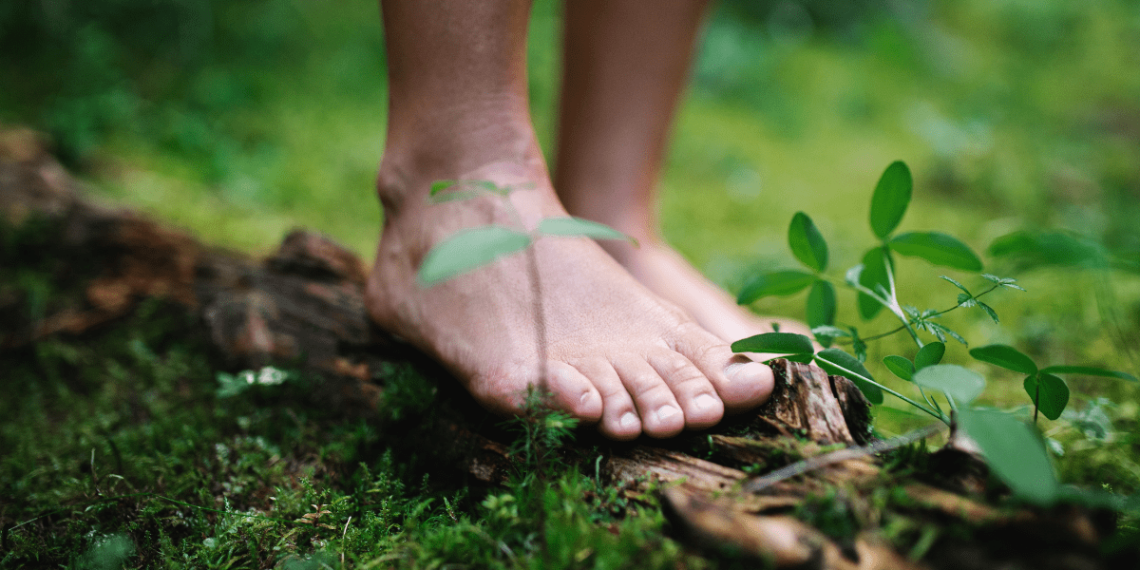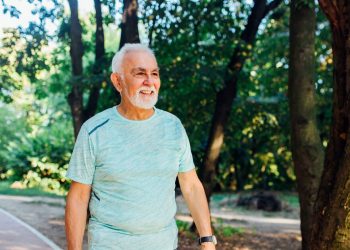In our increasingly digital and fast-paced world, many people feel disconnected from nature and their physical bodies. Grounding walking exercises, also known as earthing walks, offer a powerful remedy to this modern disconnection. This ancient practice, now backed by emerging scientific research, combines the simple act of walking with intentional connection to the earth’s natural energy. Whether you’re seeking stress relief, improved physical health, or deeper spiritual connection, grounding walking exercises provide an accessible pathway to enhanced wellbeing.
Understanding Grounding (Earthing)
Grounding, or earthing, refers to the practice of making direct physical contact with the earth’s surface. This contact allows the transfer of electrons from the ground into your body, which proponents believe helps neutralize free radicals and reduce inflammation. The earth carries a natural negative electrical charge, and when we make direct contact with it, we can absorb this energy.
While our ancestors naturally experienced grounding through regular barefoot contact with the earth, modern life has largely insulated us from this connection. Rubber-soled shoes, concrete sidewalks, elevated buildings, and constant indoor activity have created barriers between our bodies and the earth’s surface. Grounding walking exercises intentionally recreate this lost connection, combining movement with earth contact to maximize the physical, mental, and energetic benefits.
The Benefits of Grounding Walking Exercises
Physical Health Benefits
Research suggests that grounding may offer numerous physical health benefits. Studies have indicated that earthing can reduce inflammation, improve sleep quality, and decrease pain levels. When combined with walking, these benefits are amplified by the cardiovascular and musculoskeletal advantages of regular movement.
Grounding walking may help normalize cortisol rhythms, the body’s primary stress hormone. This normalization can lead to improved energy levels during the day and better sleep at night. Some practitioners report reduced joint pain, improved circulation, and faster recovery from physical exertion when they regularly practice grounding walks.
Mental and Emotional Wellbeing
The combination of nature exposure, physical movement, and earth connection creates a powerful cocktail for mental health. Grounding walking exercises can help reduce anxiety, alleviate symptoms of depression, and improve overall mood. The practice encourages mindfulness and present-moment awareness, pulling your attention away from racing thoughts and into bodily sensations.
Many people experience a sense of calm and centeredness during and after grounding walks. The rhythmic nature of walking, combined with the sensory input from the earth beneath your feet, can induce a meditative state that quiets the mind and soothes emotional turbulence.
Energetic and Spiritual Benefits
From an energetic perspective, grounding walking helps balance and stabilize your body’s energy field. Traditional practices like yoga and qigong emphasize the importance of being “rooted” or grounded. Walking while consciously connecting with earth energy can clear stagnant energy, strengthen your root chakra, and create a sense of stability and security.
Many practitioners report feeling more balanced, centered, and connected to something larger than themselves. This sense of connection can provide perspective on daily worries and foster a deeper appreciation for the natural world.
Basic Grounding Techniques for Walking
Barefoot Connection
The most direct form of grounding walking involves walking barefoot on natural surfaces. Grass, soil, sand, and even concrete can conduct earth energy, though natural surfaces are preferred. Begin by simply removing your shoes and socks and standing still for a moment, feeling the texture and temperature of the ground beneath your feet.
As you start walking, pay attention to each sensation: the coolness or warmth of the earth, the texture of grass or sand, the way your foot naturally articulates as it makes contact with the ground. Allow your steps to be slower and more deliberate than usual, giving yourself time to fully experience each moment of contact.
Grounded Footwear Alternative
If barefoot walking isn’t practical, consider leather-soled shoes or specialized grounding footwear that allows electron transfer. While not as effective as barefoot contact, these options still facilitate some connection with the earth while providing protection.
Conscious Breathing
Coordinate your breathing with your steps to deepen the grounding effect. Try breathing in for four steps, holding for two, and exhaling for six steps. This rhythm naturally slows your pace and activates your parasympathetic nervous system, enhancing relaxation and receptivity to earth energy.
Visualization Techniques
As you walk, visualize roots growing from the soles of your feet deep into the earth with each step. Imagine drawing up nourishing earth energy through these roots with each inhalation, and releasing tension and stress back into the earth with each exhalation. The earth can transform this released energy, much like it transforms organic matter into rich soil.
Specific Grounding Walking Exercises
Exercise 1: The Sensory Awakening Walk
Duration: 15-20 minutes
Location: Natural area with varied terrain (grass, soil, sand)
Begin by standing still in bare feet for two minutes, allowing your body to acclimate. Close your eyes and focus on the sensations in your feet: temperature, texture, pressure points. Start walking very slowly, dedicating your full attention to each foot as it lifts, moves through air, and makes contact with the ground again.
Notice every detail: how your heel strikes first, how your weight rolls through your arch, how your toes spread and grip. If your mind wanders, gently return your attention to your feet. Every five minutes, stop and stand still for 30 seconds, feeling how the earth supports you completely.
Exercise 2: The Energy Drawing Walk
Duration: 20-30 minutes
Location: Any natural surface
With each step, consciously imagine drawing earth energy up through your feet. Visualize this energy as golden or green light that travels up your legs, through your torso, and into your entire body. As you breathe in, draw the energy up. As you breathe out, imagine any negative energy, stress, or tension draining out through your feet back into the earth.
After ten minutes of this practice, shift your awareness to a feeling of energetic exchange: you’re not just taking from the earth but also offering gratitude and positive energy in return. This creates a balanced, reciprocal relationship with the earth’s energy.
Exercise 3: The Labyrinth Walk
Duration: 15-45 minutes depending on labyrinth size
Location: A labyrinth or create a circular walking path
Walking a labyrinth barefoot is a profound grounding practice. As you follow the winding path, the repetitive turning and the known destination (the center) allow your mind to relax while your body maintains rhythmic movement. Each turn represents releasing something you no longer need, and each straightaway represents moving toward your center.
If no labyrinth is available, create a large circular path and walk it repeatedly, maintaining awareness of your connection to the earth beneath your feet. You can walk in smaller circles (10-15 feet in diameter) for convenience.
Exercise 4: The Sunrise/Sunset Grounding Walk
Duration: 20-30 minutes
Location: Open area where you can view the horizon
Walking during the transitional times of day (dawn or dusk) can amplify the effects of grounding. These liminal times are considered powerful in many traditions for energy work and spiritual connection. Walk barefoot as the sun rises or sets, synchronizing your breath with your steps.
Feel the day’s energy awakening or settling, and allow your own energy to align with this natural rhythm. Notice how the quality of light, temperature, and even the feel of the earth changes during these special times.
Exercise 5: The Standing Practice Integration
Duration: 10-15 minutes
Location: Any natural surface
Alternate between walking for two minutes and standing still for one minute. During the standing periods, practice a simple standing meditation: feet hip-width apart, knees slightly bent, weight evenly distributed. Feel your feet firmly planted, visualize roots, and breathe deeply. This exercise trains your body to quickly access a grounded state, which you can then use throughout your day even when wearing shoes or indoors.
Exercise 6: The Walking Body Scan
Duration: 25-35 minutes
Location: Quiet natural area with safe walking path
As you walk barefoot, perform a progressive body scan. Start with awareness in your feet for five minutes, then gradually expand your awareness up through your ankles, calves, knees, and thighs. Continue scanning upward through your pelvis, core, chest, shoulders, arms, neck, and head.
The key is to maintain awareness of your feet’s contact with the earth even as you expand awareness to other body parts. This creates a felt sense of being both grounded and expansive, connected to earth while fully inhabiting your entire body.
Tips for Successful Grounding Walking Practice
Start Small: If you’re new to barefoot walking, begin with just five to ten minutes on soft surfaces like grass. Your feet need time to adapt and build strength.
Choose Your Surfaces Wisely: Grass, sand, soil, and natural stone are ideal. Avoid areas with sharp objects, broken glass, or potential hazards. Check the surface temperature in extreme weather.
Consistency Matters: Regular practice yields better results than occasional long sessions. Aim for at least 10-15 minutes of grounding walking three to four times per week.
Stay Present: The mind will wander; that’s natural. Gently return your attention to the sensation of your feet on the earth without judgment.
Respect Your Body: If you have foot injuries, diabetes with neuropathy, or other conditions affecting your feet, consult a healthcare provider before starting barefoot walking. You may need to modify the practice or use protective footwear.
Create Ritual: Establish a personal ritual around your grounding walks. This might include a moment of gratitude before beginning, a specific breathing pattern, or a closing gesture of appreciation to the earth.
Document Your Experience: Keep a simple journal noting how you feel before and after grounding walks. Over time, you may notice patterns and improvements in your physical, mental, or emotional state.
Adapt to Seasons: Your practice will naturally change with weather and seasons. Cold weather might mean shorter sessions or different locations. Honor these natural cycles rather than forcing consistency that doesn’t serve you.
Conclusion
Grounding walking exercises offer a simple yet profound way to reconnect with the earth’s healing energy while supporting your overall health and wellbeing. By combining the natural rhythm of walking with conscious connection to the earth beneath your feet, you create a powerful practice that addresses physical, mental, emotional, and spiritual needs.
Whether you have five minutes or an hour, whether you’re on a pristine beach or your backyard lawn, the opportunity for grounding is available to you. As you develop your practice, you may find that this simple act of walking barefoot becomes a cornerstone of your self-care routine a reliable way to find balance, reduce stress, and remember your fundamental connection to the living earth.
The path to greater wellbeing truly begins with a single step. Make it a grounded one.






